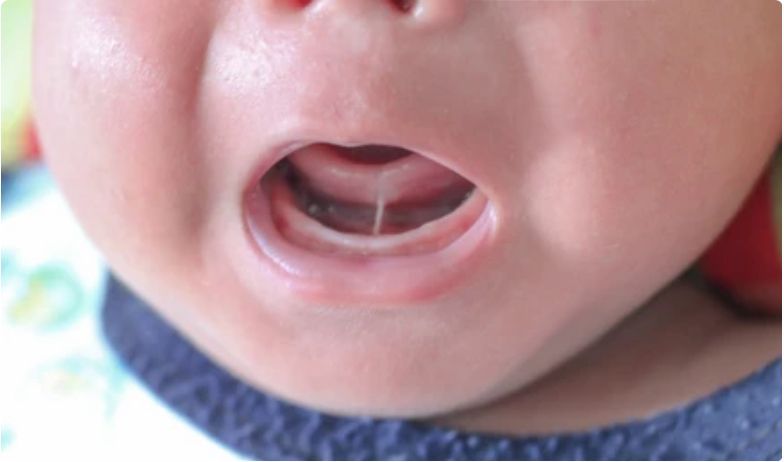AAP Autism, Folate Receptor Antibodies, and Use of Leucovorin in Children and Adolescents

What is leucovorin?
Leucovorin (folinic acid; calcium folinate) is a prescription form of reduced folic acid that does not require enzymatic activation by dihydrofolate reductase (DHFR). It readily enters the folate cycle and maintains intracellular reduced folate pools even when DHFR is inhibited or when folate metabolism or transport is impaired. Impaired folate metabolism can occur in the setting of certain genetic disorders and medication-induced impairment (eg, from methotrexate).
Because of its ready bioavailability compared with over-the-counter folate supplements, leucovorin can affect brain chemistry, and these effects can be positive, neutral, or negative, depending on an individual child’s biology. For this reason, it requires a prescription and should be prescribed under careful medical observation.
What is leucovorin used for?
Leucovorin is US Food and Drug Administration (FDA)-approved for certain indications, such as:
- Reducing toxic side effects of chemotherapy agents like methotrexate
- Treating megaloblastic anemia in specific circumstances
Off-label, leucovorin has been studied for:
- Cerebral folate deficiency (CFD)
- A subset of autistic children who test positive for folate receptor alpha autoantibodies (FRAAs)
As of September 2025, the FDA has initiated a fast-tracked approval for leucovorin for the indication of CFD. This pending approval does not pertain to autism in general.
What is cerebral folate deficiency?
CFD is a neurological condition characterized by abnormally low levels of a specific active folate metabolite in the cerebrospinal fluid (CSF) and evidence of normal folate metabolism outside of the central nervous system.
CFD typically presents in infants and young children. Clinical findings may include:
- Developmental delay with developmental regression
- Seizures/epilepsy
- Tone/movement abnormalities (eg, hypotonia, ataxia, spasticity)
- Acquired microcephaly
- Autism
- Myelination abnormalities on brain MRI
Causes can include:
- Genetic disorders (eg, pathogenic variants in FOLR1)
- FRAAs
- Certain inborn errors of metabolism or mitochondrial disorders
How is CFD diagnosed?
- The diagnosis of CFD is challenging, because the most definitive test, measuring CSF levels of 5-methyltetrahydrofolate (5-MTHF), is invasive and there is insufficient evidence to determine how many and which clinical features observed in CFD should prompt such evaluation.
- Diagnostic testing may include:
- Measuring CSF levels of 5-MTHF
- Genetic testing (eg, exome or genome sequencing) that can detect pathogenic variants in genes involved in folate metabolism or transport, but this testing will not identify all patients who may have CFD
- Currently available blood testing for FRAAs is not standardized, may not be covered by insurance, and may not reliably confirm CFD
- Testing for common polymorphisms in MTHFR is not clinically indicated and would not confer a diagnosis of CFD. These common polymorphism variants are not considered pathogenic (disease-causing) variants (see ACMG Guideline).
Note: Normal blood folate levels are expected in CFD.
What are folate receptor alpha autoantibodies?
FRAAs are immune system proteins (autoantibodies) that mistakenly target and bind to the body’s own folate receptor alpha (FRα). FRα is a protein responsible for transporting folate (vitamin B9 ) across cell membranes, especially across the blood–brain barrier.
When these autoantibodies bind to FRα, they may:
- Block folate transport into the brain and other tissues
- Lead to functional folate deficiency in the central nervous system, even when blood folate levels are normal
- Contribute to CFD
Can I test for FRAAs in my autistic patients?
There are no FDA cleared or approved tests for FRAAs. Currently, testing is offered through clinical laboratories as laboratory-developed tests under CLIA (Clinical Laboratory Improvement Amendments) oversight, rather than as FDA-approved diagnostics. This means clinical interpretation standards, validation, and analytic performance are established by the performing laboratory rather than by an FDA-reviewed labeling process.
More independent studies and clear validation standards are needed for this test to be clinically useful.
Take-home message: Interpret the results within context and avoid overreliance on test results to direct clinical decision making.
What do the studies say about leucovorin in autism?
The evidence for leucovorin and use for autism is currently limited. Small studies show benefits to communication and behavior for some autistic children, specifically those with CFD or evidence of folate metabolic differences. Larger independent trials are warranted to better understand which patients may benefit. More evidence on efficacy and safety is needed before pediatricians can broadly recommend leucovorin.
Limitation of current published research:
- The studies on leucovorin all include fewer than 100 patients.
- There are questions about some of the study methods.
- Most of the studies are from the same group of researchers, and more demonstration of reproducibility is needed.
- There has not been a large multicenter phase 3 randomized controlled trial looking at the efficacy and safety of leucovorin in autistic children. Although there can be variance in how the FDA approves new pharmaceutical therapeutics, a Phase 3 trial is commonly expected before approval and incorporation into standard care recommendations.
- A conclusion of all of the published studies is that more research is needed, and the AAP concurs.
Are there side effects to leucovorin?
Leucovorin’s effects can be positive, neutral, or negative, depending on the child’s biology. Prescribing clinicians should closely monitor effects.
Potential side effects include:
- Irritability or behavioral activation
- GI upset: nausea, vomiting, or diarrhea
- Skin: dermatitis, stomatitis, alopecia
- Anaphylaxis
- Masking of vitamin B12 deficiency: high-dose folinic acid can mask hematologic signs of vitamin B12 deficiency while allowing neurologic damage to continue
Some of these side effects are based on reports of leucovorin given in conjunction with chemotherapy, so it may be difficult to differentiate chemotherapy-related side effects from leucovorin side effects. In studies of autistic participants receiving leucovorin, side effects have included appetite changes, diarrhea, and irritability.
Leucovorin is contraindicated in certain disorders, such as MTHFS (5,10-methenyltetrahydrofolate synthetase) deficiency. In this condition, there is deficiency of the enzyme that processes folinic acid, leading to low levels of CSF 5-MTHF but also toxicity from buildup of folinic acid. Administration of leucovorin can, therefore, worsen symptoms of this disorder of folate metabolism.
Biochemical effects are complex: leucovorin influences methylation, neurotransmitters, and mitochondrial function.
What dose is typically used in CFD?
In research studies, leucovorin dosing ranges from:
- 0.5 to 2 mg/kg/day
- Maximum dose typically 50 mg/day
Because effects are variable, dosing is typically started low (ie, 5 mg BID or lower) and titrated slowly, with monitoring for side effects and clinical response.
What we do not know about leucovorin (summary)
- We do not know how to identify who has CFD without a lumbar puncture or genetic testing.
- We do not know whether autistic children without CFD benefit from leucovorin.
- We do not have a best practice for dosing, nor does the FDA give guidance on this.
- We do not know how long patients should take it or what the risks of long-term high-dose leucovorin are.
- We do not have a validated protocol to measure responsiveness and track changes over time.
What should shared decision-making look like when considering leucovorin?
Shared decision-making should include the following steps:
- Review the evidenceExplain that although some studies suggest potential benefits of leucovorin in autistic children with CFD, the overall quality of evidence is limited, and findings may not apply to all autistic children.
- Discuss risks, benefits, and alternativesOutline potential benefits (language and behavioral improvements in a subset of patients) and side effects. Discuss risks of prescriptions with limited evidence. Re-assess the child/youth’s use of other therapeutic and pharmacological supports for autism.
- Establish goals of careIdentify what the family hopes to achieve (eg, improved communication, reduced interfering behavior) and set realistic expectations for outcomes.
- Involve appropriate specialistsWhen there are clinical indicators of CFD, consultation with specialists such as pediatric neurology or genetics may be appropriate, because CSF testing and/or genetic evaluation should be considered for these patients.
- Develop a monitoring planOutline how the child’s response will be monitored, what symptoms or behaviors to track, and when to reassess treatment efficacy or make changes.
Bottom Line
- Current evidence is insufficient to support prescribing leucovorin for autism in the absence of CFD.
- Use shared decision-making with families who request leucovorin. Inform families of the current evidence and limitations and refer to subspecialists for diagnostic evaluation and management if CFD is suspected.
- Ensure supports and services are optimized. Leucovorin or any other medication should not be a substitute for comprehensive and collaborative care planning based on the individual needs and strengths of the autistic pediatric patient.
- More research is needed. Larger, well-designed, multisite trials using objective outcome measures are necessary to determine whether leucovorin is safe and effective in autism and in which subgroups it may be most beneficial for. More research is also needed to understand appropriate monitoring laboratory tests and dosing guidelines.


























